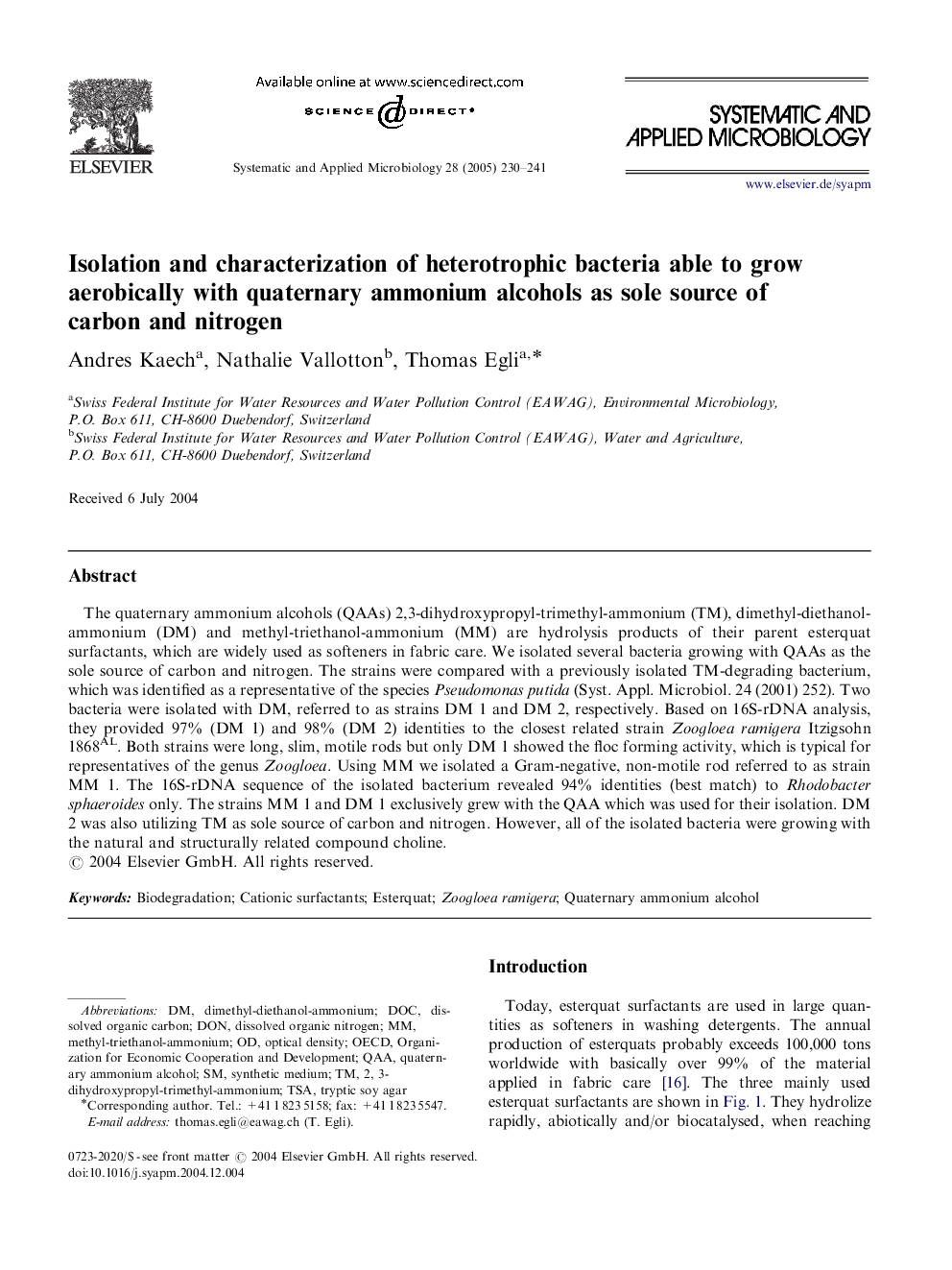| Article ID | Journal | Published Year | Pages | File Type |
|---|---|---|---|---|
| 10879823 | Systematic and Applied Microbiology | 2005 | 12 Pages |
Abstract
The quaternary ammonium alcohols (QAAs) 2,3-dihydroxypropyl-trimethyl-ammonium (TM), dimethyl-diethanol-ammonium (DM) and methyl-triethanol-ammonium (MM) are hydrolysis products of their parent esterquat surfactants, which are widely used as softeners in fabric care. We isolated several bacteria growing with QAAs as the sole source of carbon and nitrogen. The strains were compared with a previously isolated TM-degrading bacterium, which was identified as a representative of the species Pseudomonas putida (Syst. Appl. Microbiol. 24 (2001) 252). Two bacteria were isolated with DM, referred to as strains DM 1 and DM 2, respectively. Based on 16S-rDNA analysis, they provided 97% (DM 1) and 98% (DM 2) identities to the closest related strain Zoogloea ramigera Itzigsohn 1868AL. Both strains were long, slim, motile rods but only DM 1 showed the floc forming activity, which is typical for representatives of the genus Zoogloea. Using MM we isolated a Gram-negative, non-motile rod referred to as strain MM 1. The 16S-rDNA sequence of the isolated bacterium revealed 94% identities (best match) to Rhodobacter sphaeroides only. The strains MM 1 and DM 1 exclusively grew with the QAA which was used for their isolation. DM 2 was also utilizing TM as sole source of carbon and nitrogen. However, all of the isolated bacteria were growing with the natural and structurally related compound choline.
Keywords
Related Topics
Life Sciences
Agricultural and Biological Sciences
Ecology, Evolution, Behavior and Systematics
Authors
Andres Kaech, Nathalie Vallotton, Thomas Egli,
